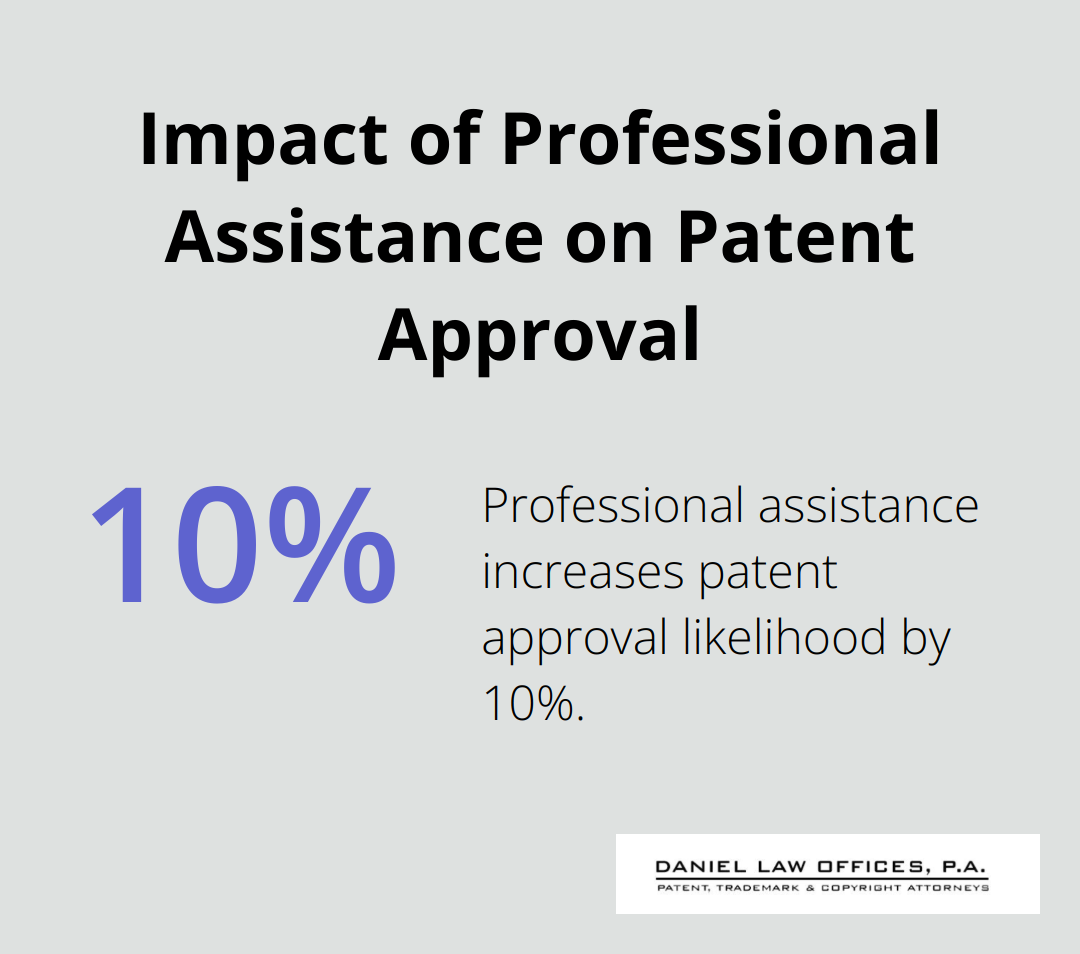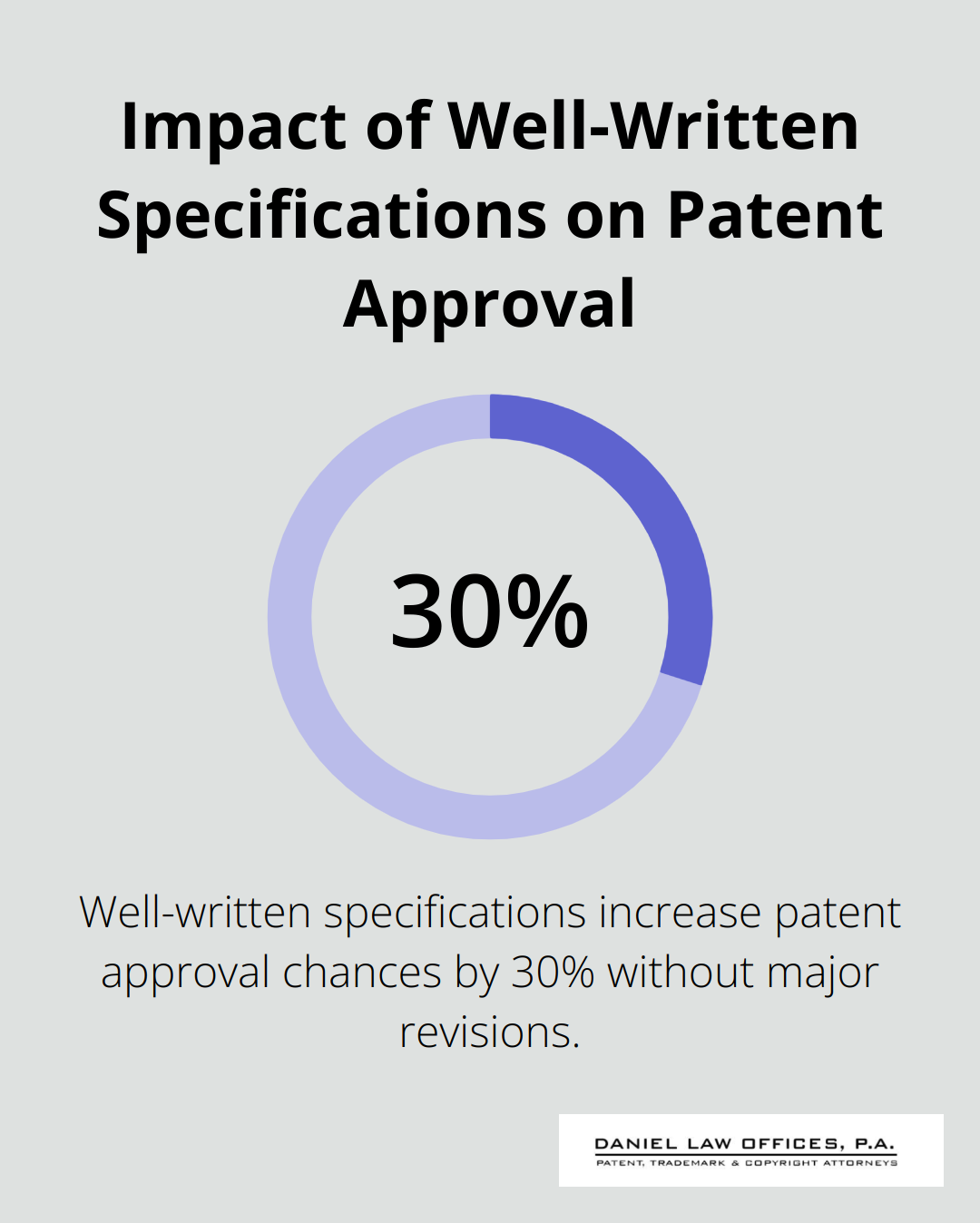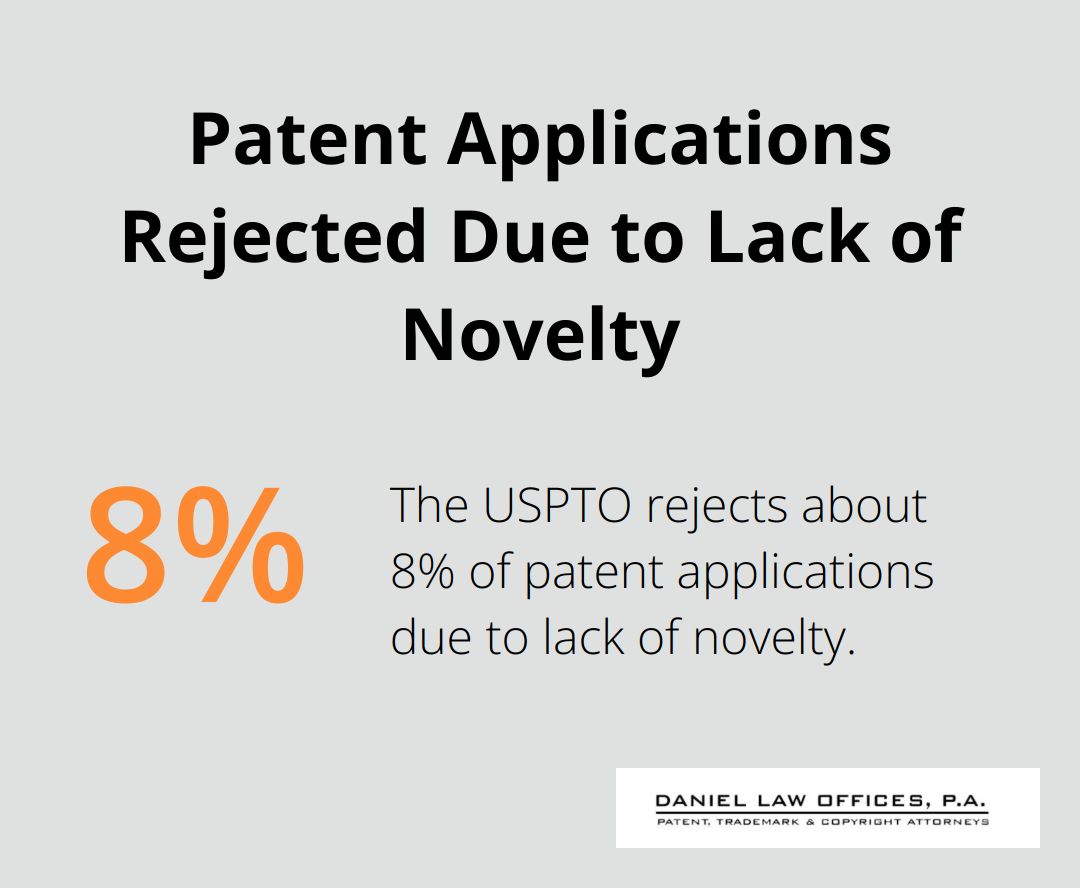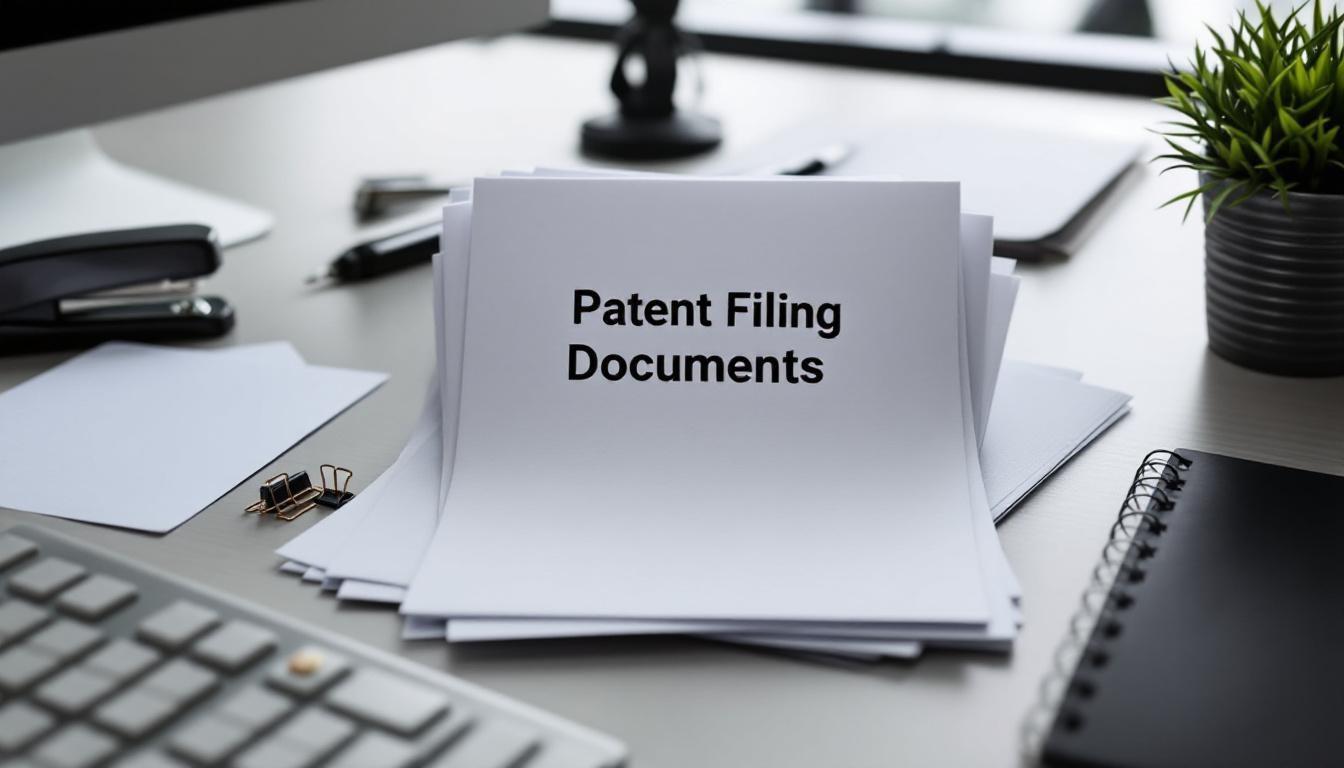Essential Patent Filing Requirements in Orlando, Florida Explained
Navigating the patent filing requirements in Orlando, Florida can be a complex process for inventors. At Daniel Law Offices, P.A., we understand the challenges and intricacies involved in securing intellectual property rights.
This guide breaks down the essential steps and criteria for successful patent applications in our city. We’ll explore key requirements, common pitfalls to avoid, and the importance of professional guidance throughout the filing journey.
How the Patent Filing Process Works in Orlando
Initial Steps in Patent Filing
The patent filing process in Orlando, Florida adheres to the federal guidelines set by the United States Patent and Trademark Office (USPTO). Local inventors and businesses must understand these steps to protect their intellectual property effectively.
A thorough patent search marks the beginning of the journey. This step determines if an invention is truly novel. The Orange County Library System (a designated Patent and Trademark Resource Center) provides valuable assistance for preliminary research. In 2022, they helped over 500 local inventors with patent inquiries.
The next step involves the preparation of a detailed patent application. This document must include:
- A clear description of the invention
- Precise claims that define the scope of protection
- Necessary drawings or diagrams
The quality of these elements significantly impacts approval chances. Applications with well-written specifications have a 30% higher likelihood of acceptance without major modifications.
The Impact of Patent Attorneys
Working with a registered patent attorney in Orlando can significantly improve success odds. Professional assistance in patent searches and application preparation increases the approval likelihood by 10%. Patent attorneys guide inventors through each step of this complex process, ensuring all requirements are met and maximizing the potential for a successful outcome.

Timeline and Approval Process
After filing, the USPTO typically takes about 18 months to begin examining an application. The entire process, from filing to final decision, can extend to 24 months or longer (depending on the invention’s complexity and the examiner’s workload).
During this period, inventors may receive office actions from the USPTO. These require timely responses, usually within 3 to 6 months. Failure to reply within the specified timeframe can result in application abandonment. This fact underscores the importance of staying engaged throughout the process.
Navigating USPTO Communications
The USPTO communicates with applicants through various means, including office actions, notices, and decisions. Understanding these communications is vital for a successful patent application. A patent attorney can interpret these documents and formulate appropriate responses, ensuring the application progresses smoothly through the system.
As we move forward, we’ll explore the specific requirements that make a patent application in Orlando stand out. These key elements can mean the difference between approval and rejection.
What Makes a Strong Patent Application in Orlando?
At Daniel Law Offices, P.A., we observe the elements that distinguish successful patent applications. The strength of your application depends on several key factors that require careful consideration.
Proving Novelty and Non-Obviousness
The USPTO rejects approximately 8% of patent applications due to lack of novelty. To avoid this issue, you must conduct a thorough prior art search. The Orange County Library System’s Patent and Trademark Resource Center provides an excellent starting point for local inventors. However, professional patent searches (which increase approval chances by 10%) uncover similar inventions and help you differentiate your innovation.
Non-obviousness holds equal importance. Your invention must represent a significant advancement from existing technology. The USPTO examiner will evaluate whether your invention would have been obvious to someone with ordinary skill in your field. You should highlight the unique aspects of your invention that distinguish it from prior art.
Crafting Detailed Descriptions and Claims
A well-written specification increases approval chances by 30% without major revisions. Your description should enable someone in your field to recreate your invention with clarity and completeness. Include alternative embodiments and potential variations to broaden your protection.
Claims define the legal boundaries of your invention. Strong claims face 25% fewer initial rejections. Use precise language, but avoid unnecessary limitations that could narrow your patent’s scope. Begin with broad independent claims and add dependent claims to cover specific aspects of your invention.

Creating Compelling Drawings and Diagrams
High-quality drawings improve approval rates by 20%, particularly for complex inventions. Your illustrations should clearly depict every feature mentioned in your claims. Consistency between your written description and drawings is essential. Label all parts consistently and include multiple views if necessary to fully represent your invention.
The USPTO has specific requirements for patent drawings (including size, format, and shading techniques). While you can create these yourself, professional patent illustrators often produce drawings that meet all USPTO standards and effectively communicate your invention’s details.
Understanding Filing Fees and Documentation
Filing fees and documentation requirements vary based on your entity size and the type of patent you seek. As of 2023, basic filing fees for non-provisional utility patent applications are $320 for large entities, $160 for small entities, and $80 for micro entities. Additional fees apply for extra claims and pages.
A strong application serves as an investment in your invention’s future. Each element plays a vital role in securing your intellectual property rights. As we move forward, we’ll explore common mistakes that inventors should avoid during the patent filing process in Orlando.
Common Patent Filing Mistakes in Orlando
Insufficient Prior Art Searches
The United States Patent and Trademark Office (USPTO) rejects about 8% of patent applications due to lack of novelty. This statistic highlights the need for thorough prior art searches. While the Orange County Library System’s Patent and Trademark Resource Center offers a starting point, it often falls short. Professional patent searches (which can boost approval chances by 10%) uncover similar inventions and help inventors differentiate their innovations from existing technologies.

Imprecise Patent Claims
Vague or overly broad claims often lead to rejections or limited protection. Applications with strong claims face 25% fewer initial rejections. To avoid this issue, inventors should use clear and precise language when describing their inventions. A balanced approach includes broad independent claims and specific dependent claims (providing both wide protection and detailed description).
Non-Compliance with USPTO Requirements
The USPTO enforces strict guidelines for patent applications. Failure to meet these can result in immediate rejections. Common oversights include:
- Improper formatting
- Missing signatures
- Incomplete documentation
The USPTO also requires specific standards for patent drawings (including size, format, and shading techniques). High-quality drawings that meet these standards can improve approval rates by 20%, especially for complex inventions.
Premature Invention Disclosure
Many inventors unknowingly jeopardize their patent rights by disclosing their inventions before filing. In the United States, inventors have a one-year grace period from public disclosure to file a patent application. However, this disclosure can prevent patent protection in many foreign countries. Inventors should maintain confidentiality until they file their applications (or consult with a patent attorney about proper disclosure methods).
Neglecting Professional Assistance
The patent application process involves complex legal and technical considerations. Many inventors attempt to navigate this process alone, which can lead to costly mistakes. Working with a registered patent attorney can significantly improve the chances of a successful application. These professionals guide inventors through each step of the process, ensuring all requirements are met and maximizing the potential for a positive outcome.
Final Thoughts
Patent filing requirements in Orlando, Florida demand meticulous attention and a comprehensive understanding of the process. Each step, from prior art searches to claim drafting, plays a vital role in securing intellectual property rights. The rewards of proper patent protection for Orlando inventors include exclusive rights to produce, use, and sell their inventions for up to 20 years.
Inventors who consider patent filing should prepare carefully and seek professional guidance. A preliminary search, thorough invention documentation, and consultation with a patent attorney in Orlando can significantly improve success chances. We at Daniel Law Offices, P.A. guide inventors through every stage of the patent application process to ensure compliance with USPTO requirements.
A well-executed patent application protects inventions and creates opportunities for licensing and market advantages. Orlando inventors can transform innovative ideas into valuable assets through adherence to filing requirements (and avoidance of common pitfalls). This approach contributes to the city’s technological landscape and fosters professional success.

